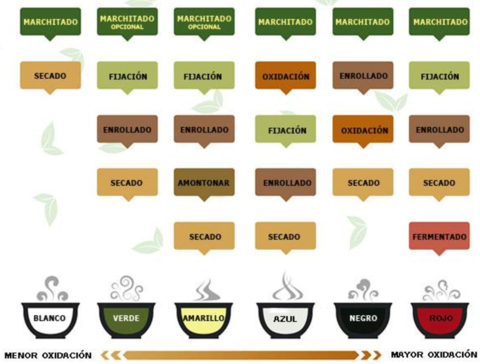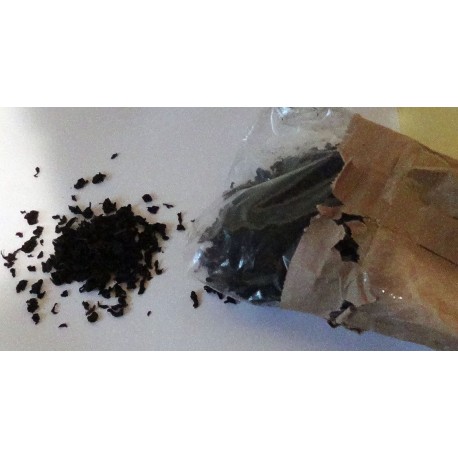No products
Prices are tax included
Oolong Tea Leaves - Bag 170 Grams
TEOOLONG170
New product
Oolong Tea Leaves - Bag 170 Grams
1 Item
In Stock
Warning: Last items in stock!
More info
Blue Tea or Oolong Tea: Properties and Benefits
Tea is a wonderful beverage. Not only is it a warm, delicious drink and it has a wide variety of health benefits: It also has a wide variety of flavors and colors. Some more known than others, but blue tea or Oolong tea, is consumed more and more.
One detail: the real "blue tea" or oolong tea, it's not blue!
¿What is oolong tea or "blue tea"?
This tea, which is not blue but of a varied color ranging from yellow to green, is obtained (like all tea) from the tea tree (Camelia sinensis) to which it is subjected to a more intense oxidation process than green tea but less than black tea.

In fact, this degree of oxidation is quite variable, from 8% to 85%. If it is low it is closer to green tea and achieve a floral or honey flavor. If it is higher it will be close to black tea, with a flavor reminiscent of nuts and wood aroma.
Oxidation is achieved by exposing the harvested leaves of the chosen cultivars to intense sunlight. The rest of the stages are the same as in the other varieties of tea, but special care is taken in temperature variations, which must be at the indicated times.
Quality Oolong Tea is originally from China, very popular in the South and its consumption extends to the West through expats that make it known in Southeast Asia and then around the world.
The properties of Blue Tea are given by its higher concentration of polyphenols and lower or similar concentration of catechins than green tea.
Properties and benefits of blue tea (Oolong):
Antioxidant power that results in an improvement of the immune system.
- It is a great preventative against cancer.
- Improves respiratory function
- Reduces blood sugar.
- Reduces blood pressure
- Regulates cholesterol.
- It is a general rejuvenator thanks to its antioxidant power.
- It helps to balance body weight because it is a very effective natural anti-fat.
- It also helps combat the effects of alcoholic beverages.
Why do they call it "blue tea" if it's not blue?
This semi-oxidized tea is also called qing cha in China. The word qing is the color of nature, and therefore can be translated as green (as in plants and leaves) or blue (as in the sky and the ocean). The word cha means tea.
In order to avoid confusion of tea with common green tea, it seemed a good idea to translate it as "blue tea". And with that name it was imposed commercially.
On the other hand, when oolong tea is a little more rusty, in China it is called wolong, what does "black dragon" mean? This word is what happened to "oolong" when it was translated into English.
Therefore, from interpretations or translations of the Chinese term is that:
Tea whose oxidation is between green and black tea is called "oolong tea or blue tea".
Reviews
No customer reviews for the moment.





